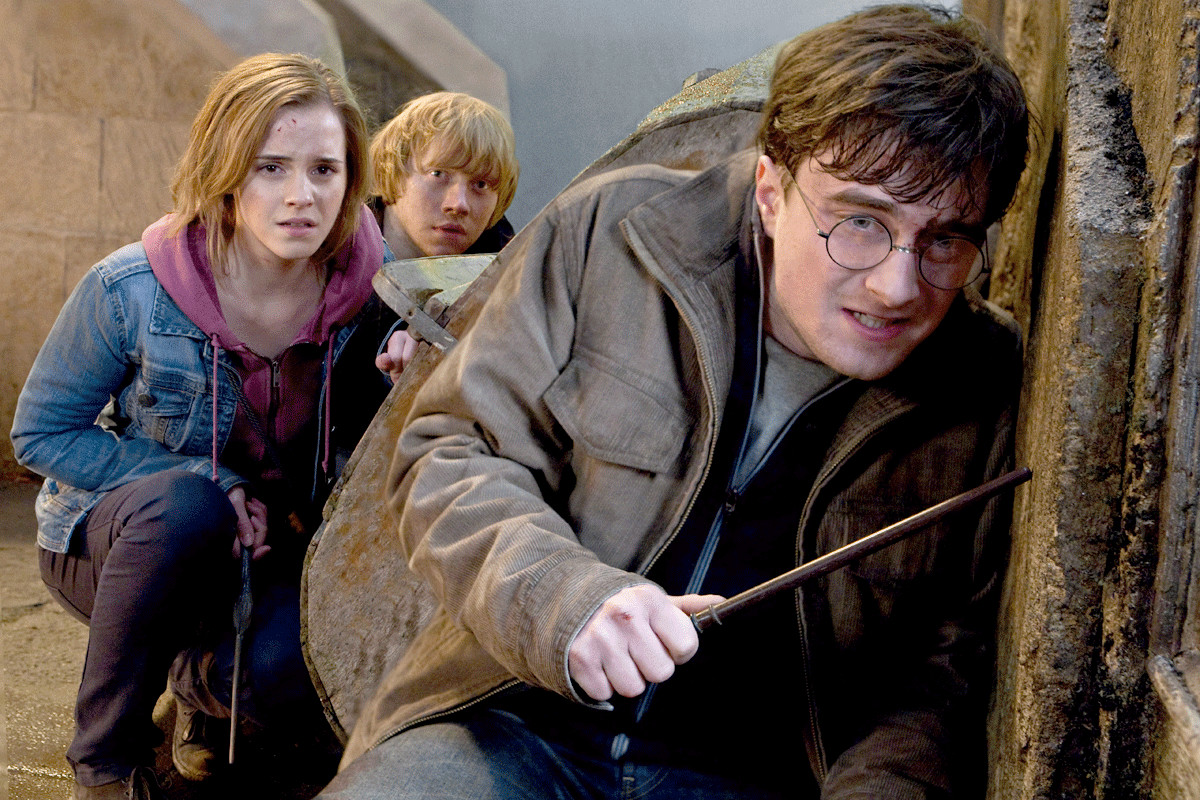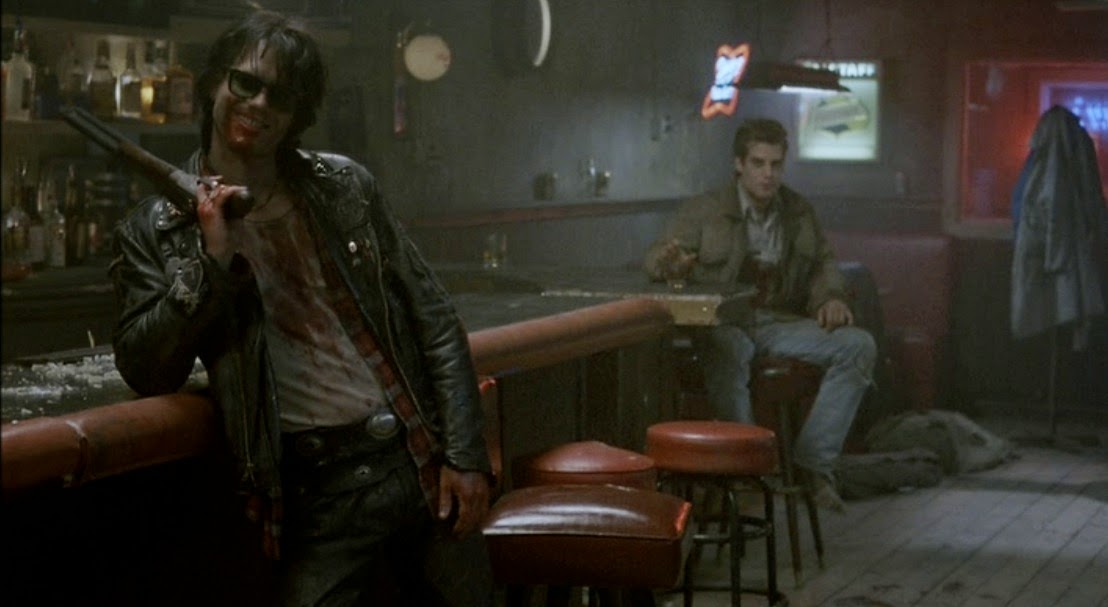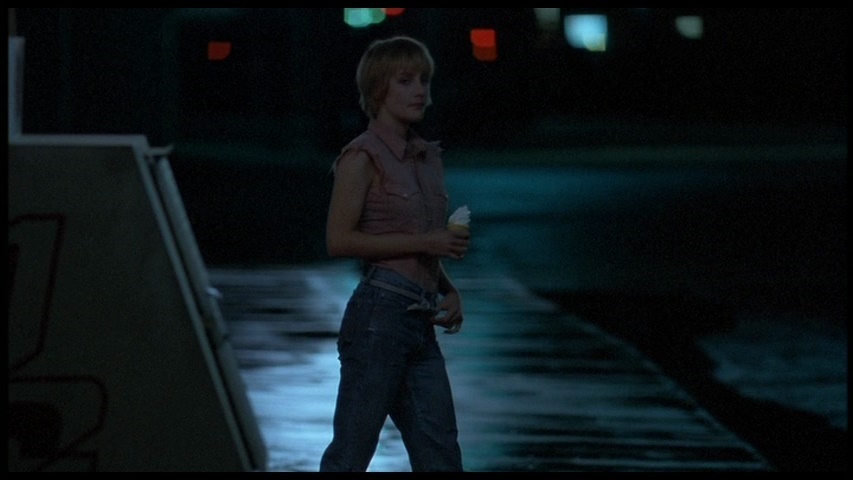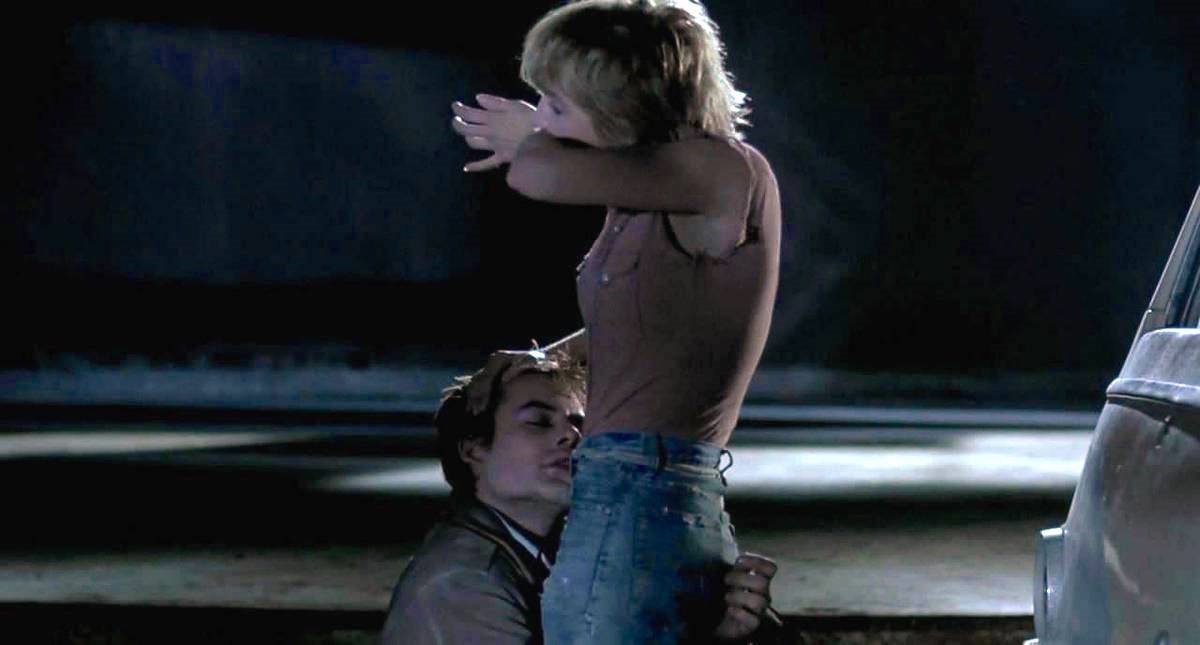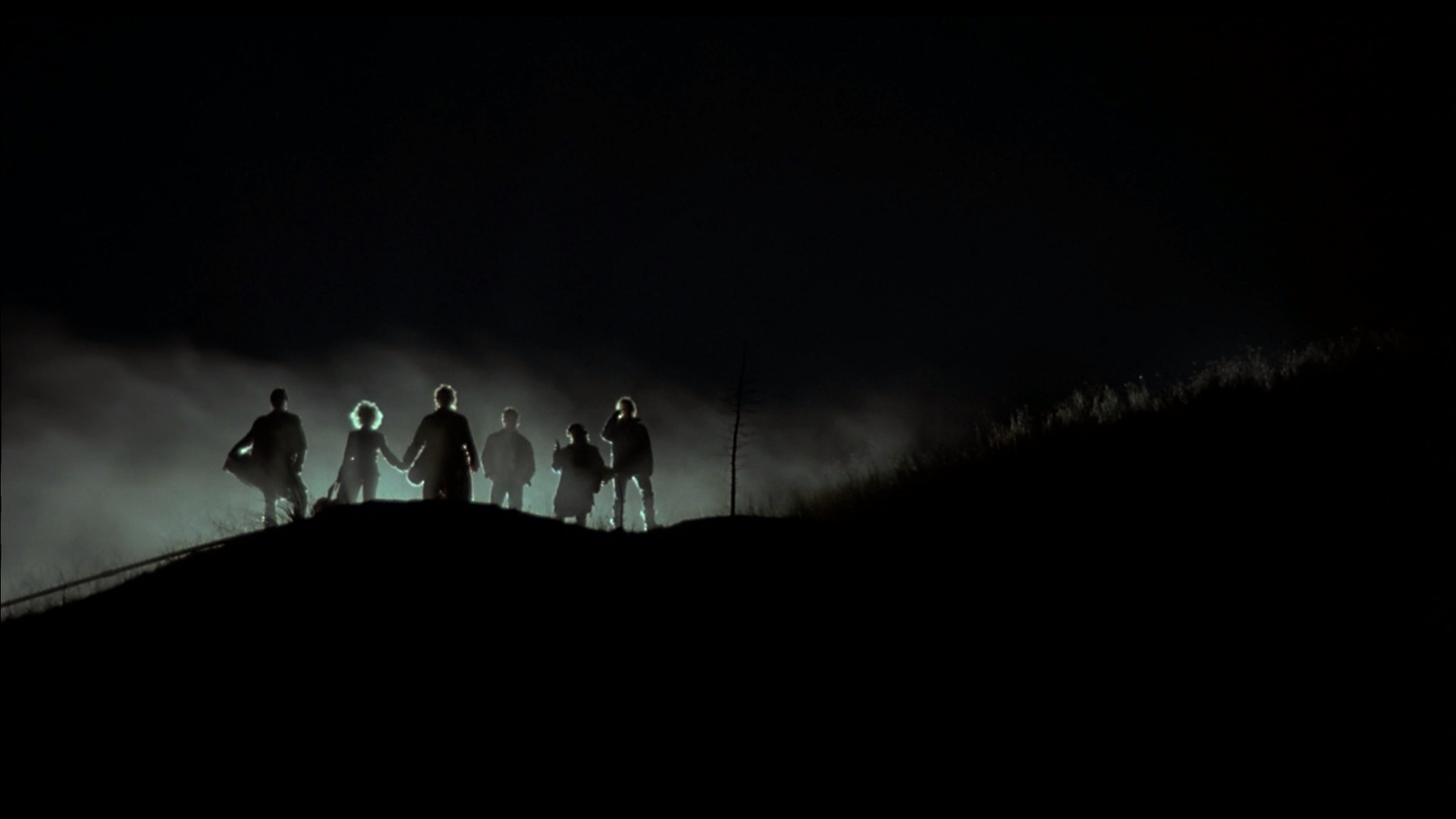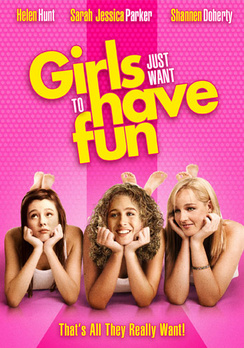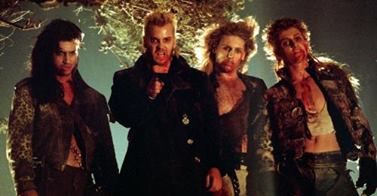This guest post written by the Fanny Pack Team originally appeared at Fanny Pack. It is cross-posted with permission.
By now, you’ve probably noticed that the all-female Ghostbusters reboot/sequel (uh, requel? seqboot?) has been out for a little while now, and judging by its healthy box office performance and mainly positive critical reception, has hopefully forced overgrown fanboys everywhere to eat their premature YouTube dislikes and Twitter rants about “ruined childhoods.”
Although there is chatter of the film as the flagship for a whole new “trend” for gender-swapped remakes in Hollywood right now, there’s actually nothing new about this treatment at all. From the gender-neutral, Alien-fighting Ellen Ripley, to the deadpan Vulcan Mr. Spock, to whiny Jedi Master Luke Skywalker (yes, that Luke), the genders of some of our best-loved characters have actually been swapping around for decades behind the scenes. The difference with Ghostbusters is that – as a remake – the swap was public knowledge, thus inviting the barrage of misogynistic grumbling that flooded the internet. It seems that we’re far more open to gender-swapping when we’re unaware of it, which highlights just how much gender alone can dictate a film’s narrative sometimes.
Inspired by Hollywood’s new appetite for gender-swapping remakes, one of our writers, Chelsey Lang, recently wrote a ‘reverse-Ghostbusters’ list featuring her picks for female-led movies remade with male casts, testing if they would still make sense or be rendered absurd to our stereotype-addled brains. We enjoyed Chelsey’s article so much that we decided to expand on her list across a two-part series featuring both female-to-male, and male-to-female remakes. So, without further ado, here are our top picks for male-to-female gender-swapped films.
Which ones would you shell out some cash for at the box office?
1. The Lost Girls
Written by Hannah Collins
Before there was Edward Cullen, Spike, Angel, or even Being Human’s Mitchell, vampires were mainly styled by pop culture as ruffle-shirted, older men with a gentlemanly turn of phrase and a penchant for dwelling in Eastern European castles or stately homes. That was before 1987 rolled up with it’s bleached mullets and Duran Duran-brand of hyper-masculinity to give the aging undead that sexy teenage make-over they didn’t know they needed. I’m talking about cult-classic, The Lost Boys.
To those unfamiliar, yes – the title is a direct reference to J.M Barrie’s “lost boys” from Peter Pan, and merging this parable about the pros and cons of eternal youth with vampire mythology (along with the come-hither-fanged smirk of a then unknown Keifer Sutherland) turned out to be pretty effective at revitalizing both for the modern day. The result is a punk-inflected fairy tale of male youth in revolt – alluring to teen audiences but suitably shocking to all those grown-ups who just don’t get it, man.
But while main character – the mostly human, Michael (Jason Patric) – feels threatened by David (Keifer Sutherland) and his undead gang, he doesn’t feel so threatened by the only female member, Star (Jami Gertz). This is consistantly the plight of the lesser-spotted female vampire: an object of submissive sexuality compared to the sexual dominance that her male counterparts exude. Moreover, Star’s regaining of her humanity by the end of the film paints her more as a victim to be “saved” from the vampire curse, rather than revel in it as the male gang members are allowed to do. (They’ve got at least another ten years to “party hard, Wayne” before Buffy stakes the shit out of the whole nest, after all.)
This is why The Lost Boys is so ripe for a gender-swapped remake, and it needs to happen soon before the vague afterbuzz of Twilight and The Vampire Diaries has fully settled. I want to see a dangerous, morality-ridden teenage girl gang – fanged and fierce – skulking the Santa Carla Boardwalk at night with a token brown-eyed boy member (he could still be called ‘Star’) to reel in the new, unsuspecting human protagonist (let’s call her ‘Micheala’). Less Bella and Edward and more, uh, Beau and Edythe, I guess.
We’ll need some relatively less famous, young faces keeping in line with the original casting, so let’s have Taissa Farmiga (American Horror Story, The Bling Ring) as our fiesty, vamp-busting heroine ‘Micheala,’ Tyler Posey (Teen Wolf) as our eye-candy ‘Star,’ and Zoe Kravitz (Mad Max: Fury Road, Dope) as our badass leader of the pack, ‘Darcy.’
2. Arsonist’s Daughter
Written by Amy Squire
I would love to see a new film about female writers that doesn’t center on the “woman fights against society’s expectations to become a writer” trope. Instead, it would be refreshing to see the fact that they’re writers taken for granted. Wonder Boys was based on Michael Chabon’s novel of the same name about a writer unable to finish his latest novel as his personal life unravels. In the 2000 original, a middle-aged literary professor (Michael Douglas) gets caught up in a weekend’s misadventure in the company of his troublesome editor Terry Crabtree (Robert Downey Jr.) and young protege James Leer (Toby Maguire). Their capers involve the theft of a piece of Marilyn Monroe memorabilia, a dead dog, and Crabtree’s roving eye for any man he meets.
This all may sound foolish, but a witty script, showing off the imagination and dark side to these characters, elevates the film above the average comedy. This calls for an accomplished cast. In my reimagining, Jodie Foster plays the dry, weed-smoking genius Professor Tripp who wrote her award-winning novel seven years ago and is hounded by her editor, family, and students to produce the long-awaited follow up. After her husband walks out, her misbehaving editor turns up to chase progress. Crabtree would be the most difficult to cast but perhaps Maggie Gyllenhaal could strike the right balance of intelligence and mischief. Mia Wasikowska has the perfect combination of naivety and brilliance to play the seemingly-innocent but prodigal student Leer.
Something of a cult classic, the thought of remaking Wonder Boys seems sacrilege, but who wouldn’t want to see this dream team’s comedy of errors? We need more female-driven comedies, especially ones that don’t find humor in a woman chasing a man. There is a sub-plot based on Tripp’s love-life, but it’s more of a resolution of an existing relationship, than a romantic love story. The fact that the original film went under the radar at the box office could spell success for a reboot. Since the original title wouldn’t work and Wonder Girls sounds patronizing, I would suggest a new title; Arsonist’s Daughter, the name of Tripp’s eponymous debut.
3. Ant-Woman
Written by Robert Wood
It’s guaranteed to be far from the worthiest choice on the list, but in terms of the immediate good a gender-swap would do, I honestly think Ant-Man deserves a mention. The 2015 movie about Paul Rudd’s shrinking superhero was good enough in terms of a modern movie, but was a great, missed opportunity for Marvel’s first female-led film.
I should probably start my case by snuffing out the ever-present fanboy protest – I know and love as much about Marvel superheroes as the next three people combined, and there’s no reason there can’t be an Ant-Woman. Hank Pym has gone by many pseudonyms, ‘Ant-Man’ included, and has shared them with men, women, people of color, alien imposters, and robots. There are even female characters with the same abilities – Stature/Cassie Lang, who was in the movie (without her powers), and The Wasp/Janet van Dyne, who was in the movie (kind of, in flashback, in CGI). The latter is a founding member of the Avengers who has done everything Ant-Man has done “but backwards and in heels” (he also took her name when she was dead for a bit – precedent!)
That’s why Ant-Man could have a female lead, but why should it get one? First of all, because that choice would add something new and interesting to the Marvel Cinematic Universe. Paul Rudd’s “charming fuck-up” portrayal of Scott Lang is fine, but doesn’t bring anything that Chris Pratt, Robert Downey Jr., and Tom Holland don’t have covered. Let a woman add something different to the role – in fact, let a Marvel woman be a fuck-up!
It was announced that Brie Larson will play Captain Marvel, and of course Scarlett Johansson is already a badass Black Widow. Hell, even Ant-Man hinted that Evangeline Lilly will at some point sprout wings as a tough-as-nails Wasp. At least one (probably two) of them will get their own movie soon and enter the Marvel ensemble cast, but there’s not a fuck-up in the bunch. By “fuck-up,” I don’t mean the klutzy-yet-professional woman from a crap rom-com; I mean someone who isn’t immediately good at this, who has made bad decisions they want to atone for, and who can at least deliver their quip allotment in a way that a) we don’t already have and b) includes far more of the audience in the vicarious feeling of agency and ability.
Currently, Marvel superheroes show men (and boys) that you can go from slob/jerk/weakling to hero – that perhaps that’s even how you get to being a hero. That’s a nice message, contextualizing moral behavior as a struggle rather than a quality you automatically possess. Women (and girls), on the other hand, get pre-made badasses who may, in an unguarded moment, reference the appalling tragedy that made them the way they are. Large-scale social change begins with mainstream pop culture and especially with children’s entertainment. If you want more women professionals in business, sports, and STEM in 2036, make more girls in 2016 feel like they could be superheroes.
Who should get the lead role? My first choice would be Fresh Off the Boat’s Constance Wu, a comedic actress who I think could easily pull off the “Oh, God, this now?” that makes Ant-Man fun. Rashida Jones would knock if out of the park as well.
4. The Pursuit of Happyness
Written by Hannah Shoesmith
Will Smith’s portrayal of Christopher Gardener, a Black single father who tackles poverty and homelessness to become a broker, is an honest depiction of the hard struggle it is to be successful. It is a refreshing side of Hollywood where true stories are not whitewashed, where the plight of the Black man trying to succeed in America isn’t devalued or glossed over.
But what if The Pursuit of Happyness had a female lead? What if it were the story of a Black single mother trying to make it as a broker? It is not a new concept that roles written for men have ended up being played on our screens by women. Think Angelina Jolie’s hard-edged character in Salt or Jodie Foster in Flight Plan. The success of this film is down to the honesty of the story. Unlike other biopics, very little was changed from the lived experience of Chris Gardener. Changing the lead from male to female however would expose a deeper, more brutal struggle.
The eventual success of Smith’s character was a hard graft, but what if that character had to also overcome sexism? The dangers a person faces while homeless are tough, but as a woman issues of rape and prostitution are an added danger. There are very little blockbusters that address the stories of Black women within the workplace, or in poverty. It can be perceived by movie big-wigs that there isn’t an audience for these types of films but a single mother’s struggle is probably one of the most relatable stories.
But who would be the perfect leading lady? Even amongst actors of color, there is still hegemony within Hollywood about who gets the roles. Just look at the controversy surrounding Zoe Saldana being cast as Nina Simone. Films such as these are the perfect opportunity to showcase the acting skills of some rising Black female stars. Orange Is The New Black’s Uzo Aduba would be an exceptional lead actress, and we already know she has the ability to captivate an audience and channel emotions.
5. Her(cules)
Written by Alyssa Skinner
Growing up watching Disney film after Disney film where the girl was a beautiful princess (whether from the beginning or not) was so …YAWN. She was always beautiful and soft and sweet and feminine and rescued by Prince Charming. Ugh.
And then there was Mulan. Now, that was my shiz.
Mulan allowed me to see that I did not have to beautiful; I did not have to wait for Prince Charming; I did not have to follow traditional rules; I did not have to be soft, feminine and sweet to be liked or to be successful. I could save the entire country, all on my fucking own. Nowadays, there are a few more strong female leads in Disney productions with recent films like Brave and Frozen, but back in the 1990s, Mulan was the only tale able to set this precedent for me. Perhaps this explains my intense love for the epic. While the current and future female-featured Disney stories (Moana <3) should absolutely continue, how about we remake an oldie but a goodie?
Her(cules): half god, half mortal, full female lead character. Voiced by the sweet and badass, Zendaya, Her(cules) is young and naive but fiercely strong and she doesn’t know her true potential, yet. As an outcast teenage girl, Her(cules) has all the struggles of trying to find her identity and her place in the world. When she finds out she is adopted and goes looking for answers, she learns that she is a descendant from the gods and must become a “true hero” to regain her godliness. To become this hero, she sets out to find a trainer. This prickly motivator and sidekick, Phil(omena), played by the hilarious Amy Schumer, will teach her and guide her.
Through her journeying, Her(cules) stumbles upon and ends up saving Mega from a Centaur. Mega, voiced by Jesse Williams, has the smart-aleck, sarcastic, hair-flipping appeal of a true bad boy. A romance is sparked. Hades, played by Chelsea Peretti, uses this love affair to manipulate Her(cules) out of her powers for 24 hours and in tandem, reveals that Mega actually works for her. In the end, Her(cules) saves her God parents, AND saves Mega’s soul from the undead river of souls by sacrificing herself for him. Her selfless sacrifice restores her godliness which she ultimately chooses to give up to stay with Mega as mortals and live happily ever after and all that jazz.
How often does the female lead character get to save the male love interest via a physical feat? BOOM. A female role model that every little girl can look up to and see that are not waiting for a boy or a crown and a glass slipper. They can dress up as with a Grecian cape and sword for Halloween and know that should they choose, they too can be a true god-like hero.
6. Harriet Potter
Written by Maeve Kelly
Now if there’s one thing that’s hitting the headlines recently, it’s Harry Potter and the ‘Alternative Universe’ Concepts. That is thanks entirely to The Cursed Child, the latest Harry Potter book/film/play/controversy, which presents (amongst other things) multiple alternate realities to the Harry Potter world. Some have pointed out that the play barely passes the Bechdel Test– leaving me (consummate Harry Potter obsessive) to wonder about the level of female interaction in all of these books-come-films.
The Harry Potter series has been applauded in the past for it’s depiction of strong female characters — key of which is, of course, Hermione Granger. Considered the “smartest witch of her age,” Hermione is one of the array of women characters (Ginny, Luna, Molly, Bellatrix, Tonks, Fleur, McGonagall) who prove themselves to have agency, complexities, and flaws throughout the series. J.K. Rowling herself has spoken about the importance of not “marginalizing” women characters, especially within action sequences. So why, then, did Rowling simply not go the whole hog and make Harry a girl?
Quora have previously discussed the concept of a female Harry Potter (suggesting the name ‘Holly Potter’ due to the number of floral names amongst the women in his family), focusing mainly on her relationships with the other characters. Would a romance blossom between her and Ron? Would she be rivals with or friends with Hermione, an equally powerful but arguably less important witch? What would the media pressure that Harry suffers throughout the series do to a young woman? From my perspective, it would be fascinating to see the golden trio re-written with two or even three woman characters at it’s center. This would be instead of Hermione attempting to act as a one-woman-inclusion-machine, representing women, muggleborns, and (more recently) Black people.
The concept of target audiences only buying into what is familiar to them is probably a key reason that Harry was not originally written as a girl. Rowling published under the initials J.K. instead of her first name, Joanne, amongst fears that young boys would not read a book written by a woman. Nevertheless, now that the Harry Potter brand has gained universal fame, it has already proved possible to retrospectively increase diversity in the series (gay Dumbledore and Black Hermione being key examples). Therefore, I think the time is ripe to see Harriet/Holly take to our screens, alongside her platonic best friends, Ron and Hermione. I’d love the next generation to see an angry, neglected, scarred young girl journey through grief, friendship, and loss to become the powerful symbol of the ultimate triumph of good which Harry was for my generation.
Casting young children would be difficult as they are spotted at a young age and grow with the filming, but we could start off by casting Quvenzhané Wallis as either Harriet or Hermione, and work from there.
See also at Bitch Flicks:
A Fragile Masculinity: Gender-Swapping Male Characters
Top 10 Supheroes Who are Better as Superheroines
Top 10 Superheroines Who Deserve Their Own Movies
Top 10 Superheroine Movies that Need a Reboot
Top 10 Villainesses Who Deserve Their Own Movies
Fanny Pack was created to raise awareness surrounding gender inequality and the simple fact that it still exists today. Fanny Pack consists of a team of writers that deliver valuable content to the wider discussion, whilst inspiring more people to read and write.
